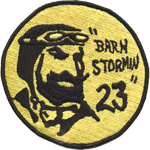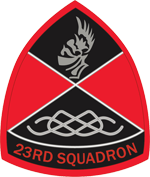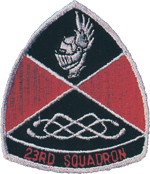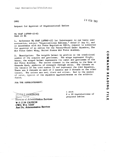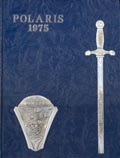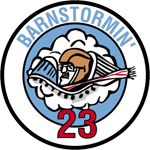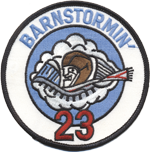Description: A red, black, and silver shield with the point up is bordered and quartered in silver. A silver-winged knight’s helmet outlined in black rests in a black field in the upper quarter. A Wake or Ormande Knot in silver is in the lower quarter with a black background. The other two quarters are in red. Across the bottom in red letters is “23RD SQUADRON” on a black band.
Significance: The knight’s helmet in profile is the traditional symbol of the esquire and gentleman. The wings represent flight, hence it represents the cadet gentlemen of the Air Force Academy. The knot is symbolic of strength through unity. The threads on the tassels number 23, representing the squadron (six threads on each of three tassels, five on the remaining one). The red is the symbol of valor, typical of the squadron aggressiveness on the athletic field.
History: This was the squadron’s first patch, adopted in 1963.
Nicknames: "Crash and Burn," "Barnstormers."
 1965 – 1976
1965 – 1976






